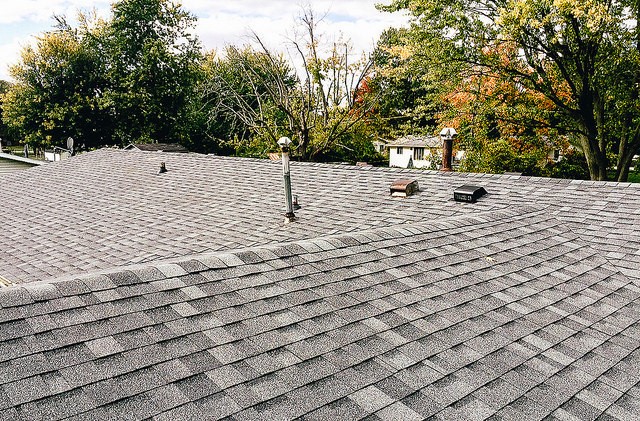As the wind whistles through the streets and trees shake fiercely in their powerful grips, have you ever wondered how your humble abode fares against the might of Mother Nature?
The resilience of our roofs, those steadfast guardians of our homes, often goes unnoticed until strong wind storms come knocking. Therefore, understanding how much wind your roof can withstand is crucial not only for your peace of mind but also for the safety and longevity of your dwelling.
In this article, we embark on a captivating exploration of the forces of wind that test the strength of your roof.
Wind Ratings for Roofs
Wind ratings are crucial in determining how much wind your roof can withstand. This rating is a reliable measure of a roof’s ability to endure powerful winds – with variations depending on the chosen roofing material. Understanding wind ratings is essential to ensure that your selected roof protects against strong gusts.
That said, wind ratings are typically measured in pounds per square foot (psf). It indicates the pressure a roof can withstand before succumbing to damage or failure from high winds. Generally, higher wind rating numbers indicate better defense against intense gusts, but other factors also come into play.
Different roof types boast varying wind ratings due to their distinct construction materials and design characteristics. For instance, asphalt shingle roofs have lower wind ratings than sturdy metal roofs.
Tile roofs, on the other hand, often exhibit greater resistance to powerful winds than both asphalt and metal alternatives. It’s important to consult a knowledgeable contractor who can guide you in selecting the right roofing option based on specific design features such as shape, size, and layering.
Choosing a roofing system requires considering several factors, including the material used, installation quality, and roof age. You may also consider things like local climate conditions and adherence to building codes, all of which contribute to its overall wind rating.
Wind Tests on Roofing Materials
The durability of roofing materials against high winds is a critical aspect that undergoes rigorous testing. Take, for instance, all-metal roofing, which is subjected to ATSM 1592 tests to ensure it can effectively resist the powerful uplift forces exerted by wind.
When these materials pass the test and are installed correctly, they demonstrate remarkable resistance to normal wind uplift forces.
Similarly, asphalt shingles undergo wind tests that determine their wind class, indicating the areas in which they are suitable for installation. A notable example is CertainTeed Landmark shingles, which have undergone testing according to ASTM D3161 and ASTM D7158 protocols, receiving Class F and H designations, respectively.
The earlier ATSM D3161 test established Landmark shingles’ suitability for areas with winds up to 110 mph. In contrast, the newer ATSM D7158 test demonstrated that specific Landmark shingles can withstand wind speeds of up to 150 mph.
To determine the performance of your shingles against extreme wind conditions, it’s crucial to identify the specific rating achieved. Most shingles are typically rated for up to 110 mph winds. Shingles up to this rating are usually suitable for category 1 and 2 hurricanes.
Proper Installation Methods for High Winds
If you want to install a roof that can withstand high winds, you must install it properly. Begin by ensuring the roof decking and underlayment are well-prepared. The roof deck should be clean, dry, and debris-free.
All nails or screws should be countersunk into the wood to prevent them from protruding through the shingles. It is crucial to install an ice-and-water shield membrane to protect against wind-driven rain, especially in vulnerable areas like valleys and eaves.
Securing the shingles to the roof decking is the next crucial step. Use nails or staples spaced at least 3/8 inch apart, and asphalt cement for stability in high winds. Each row of shingles should overlap by at least two inches to eliminate gaps that could allow wind-driven rain to penetrate the home.
Install flashing around vents and joints to fortify your roof against the elements. Also, ensure to seal them with caulk or tar paper tape. Cover Chimneys with metal flashing and securely caulk them to prevent moisture infiltration. This will also help ensure proper airflow in the attic space when necessary.
Conclusion
Protect your home and loved ones by choosing RoofPro for all your roofing needs. Contact us today to learn more about our exceptional services and to schedule a consultation.
Don’t compromise regarding the safety and durability of your roof – trust RoofPro to keep you secure in powerful wind storms.


